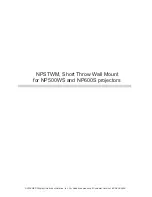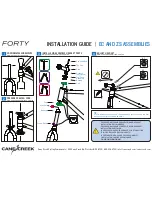
2-10
Rev 2.2, 10/31/94
predetermined point. In its most simplistic form, that's all there is to it. (But there is a BUT, as
you will see.)
AGC amplifiers have been with us for many years. In the broadcast world, the old Gates Level-
Devil and CBS Labs Audimax are both examples of old (circa 1960) products that performed
this function. The feature that sets these guys apart from common-ordinary-garden-variety
compressors is: gated, program-controlled release.
If you remember back to the early days of TV, remember when someone at the network screwed
up and let the program lapse, the compressor at the local station would release and whoooosh,
up would come the noise floor...until the guy at network woke up, in which case it went
suuuuuuuck and back into the program audio. Both the Level-Devil and Audimax fixed this
problem by making the release time of the compressor a function of the program audio. That is,
they inhibited the gain reduction release if there was no audio present. If audio was present,
then the compressor was free to release as much as it wanted, but if there was no audio
present, the unit remained at the amount of gain reduction in force before the audio loss.
Both the Audimax and the Level-Devil depended upon silence to control the gain-release
function. In practice, the silence detector can be fooled by a noisy input signal. Since the
AGC/Leveler needs to work at very low threshold levels in order to accommodate a wide range
of input levels (ideally, you want the AGC/Leveler to function with signals ranging from near
thermal noise to high line level), an ordinary signal-present detector would respond to hum or
noise by mistaking it for a valid signal.
If you try using a simple compressor as an AGC, there is no signal-controlled gated-release
function. Thus the overall gain is highest anytime that the signal falls below the compressor's
threshold. By itself, this isn't disastrous (perfectly workable with a noiseless input signal), but
the sudden change in noise level when a normal-level signal presents itself is a dead giveaway
that your compressor is lacking in the IQ department. This is the BUT mentioned earlier.
The 601's AGC function performs some analysis on the signal in order to make an informed
decision about the signal's nature. If the signal is determined to be noise or silence, then the
AGC's release function is inhibited. When the signal analyzer detects that the signal has
returned, the AGC is again allowed to release, which causes the gain to rise or fall in response
to the signal level.
2.10 Delay
One of the simplest things that you can do to an audio signal to dramatically change its
character is to add in a delayed version of the signal. By adjusting parameters such as delay
time, delay level, and feedback, you can create impressions of time, space, distance or
reflection. The delay in the 601 is a two-channel delay with paralleled inputs and separated
outputs. The feedback paths between input and output are cross-coupled. This means that
delay one's output feeds delay two's input and delay two's output feeds delay one's input.
For example, you can get a '50s sound by adding 250 ms delay to a signal. Adding feedback
makes the delay effect linger, since the feedback causes the echoes to repeat until they die out.
By shortening the delay and fiddling with the feedback, you can simulate reflective rooms of
various dimensions. Making the delay times slightly different "spreads" the sound, eliminating
the point-source effect. If the delay times are long enough, you'll hear the echoes bouncing
back and forth between the speakers.
Note
: the dual-delay used in the 601 is not sufficient to create any sort of realistic reverb. Good
sounding reverberation requires a multi-tapped delay line.
Содержание 601
Страница 46: ...4 18 Rev 2 2 10 31 94 This page is blank believe it or not ...
Страница 48: ...4 20 Rev 2 2 10 31 94 Notes ...
Страница 50: ...5 2 Rev 2 2 10 31 94 Notes ...
Страница 70: ...7 16 Rev 2 2 10 31 94 Notes ...
Страница 72: ...8 2 Rev 2 2 10 31 94 Notes ...
Страница 74: ...9 2 Rev 2 2 10 31 94 Notes ...
Страница 78: ...11 2 Rev 2 2 10 31 94 Notes ...
Страница 126: ...D 12 Rev 2 2 10 31 94 Notes ...
Страница 138: ...G 8 Rev 2 2 10 31 94 Notes ...
















































